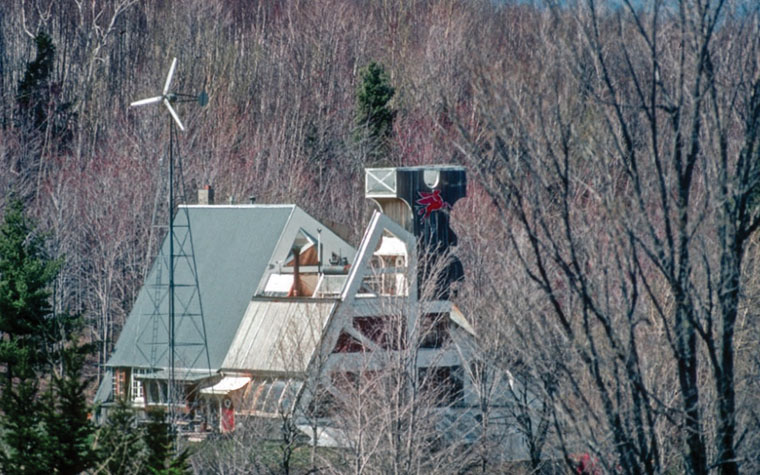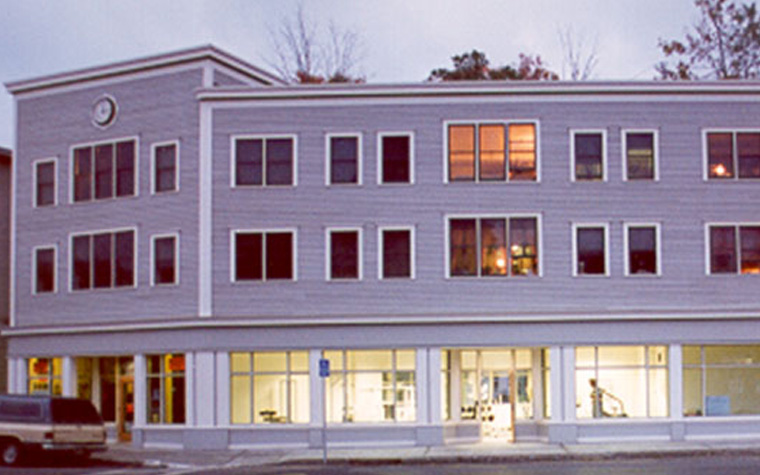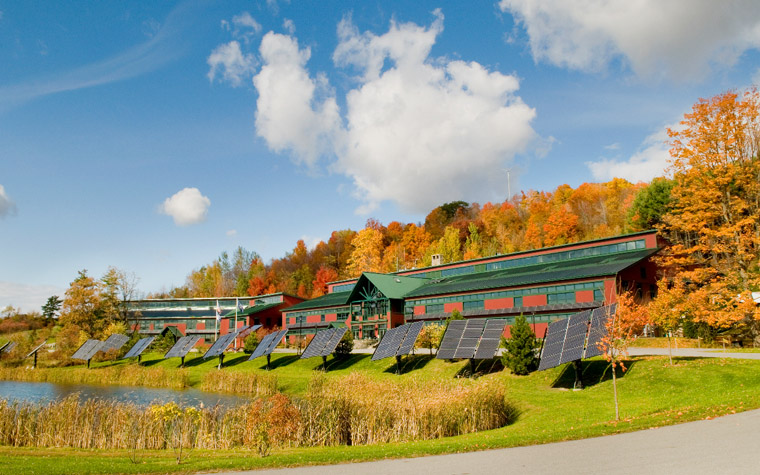History
Our Path Towards a Net-Positive Future for the Planet
Maclay Architects is celebrating nearly four decades of design, speaking, teaching, and writing in pursuit of a positive future for our planet. Bill Maclay founded the firm in 1981 after a decade as a sole practitioner and as a partner in other firms. We are recognized leaders and advocates for ecologically-based, net-positive energy, and carbon-positive design.

Solar Experimentation
At the start of his career, Bill Maclay designed and built solar-powered buildings, which gained international recognition in books, magazines, and an exhibit in Vermont and Europe. These projects included Dimetrodon, a solar-heated and wind-powered co-housing community, as well as numerous single-family homes. In addition, he taught at, and worked to develop a renewable-based and sustainable master plan for The Institute for Social Ecology at Goddard College, as well as developing a strategic energy plan for the Mad River Valley.

Energy Conservation & Building Science
In 1981, Bill founded Maclay Architects with a commitment and passion for eco-systems, renewable energy, social equity, and addressing climate change. In the 1980’s, the firm focused on energy performance and building-science-based design, and expanded from single-family homes, to multi-family affordable housing, commercial, and institutional projects. Specific projects included one of the first super-insulated passive solar homes in the US; a double wall, super-insulated affordable housing and retail project; and a 103-room hotel. Many of these projects were recognized in books and magazines, and Bill and the firm continued their advocacy through teaching and speaking events.

Healthy Buildings
The firm focused on healthy building design, optimizing indoor air quality with the use of healthy and durable materials, ventilation, and advanced, building-science-based envelope design. Maclay Architects designed numerous high-performance affordable housing projects, historic renovations, public buildings, and single-family homes during this period.

Net-Zero Buildings
The firm adopted an integrated design process for the development of high-performance buildings, as well as utilizing energy modeling and a financial assessment methodology. Returning to, and expanding on an earlier focus on renewable energy, the firm designed their first large-scale net-zero energy buildings. Numerous projects received LEED Gold and Platinum certifications. During this time, Maclay Architects also began to consider buildings as a living ecosystem, incorporating nature-based design, biophilia, and biomimicry.

Living Buildings & Communities
In this decade, the Maclay Architects team continued to refine and improve the process to deliver net-zero and net-positive buildings cost-effectively, and on an increasingly larger scale. Projects designed and constructed in this decade include a diverse mix of workplace, educational, recreational, and residential projects. A multifamily housing project completed at the decade’s end is now the firm’s first Passive House certified building. Project scopes expanded to include net-zero design for campus and community-wide scale, including the feasibility study for a 200,000 square foot mixed-use neighborhood. Maclay Architects also began to offer net-zero consulting services to other architecture firms from conceptual design strategies to support with envelope detailing and construction. This strategy allows the firm to expand its impact both geographically to the greater New England region and beyond, such as a Living Building Challenge project in New Jersey; and in scale, such as a 120,000 square foot public school addition and renovation. In 2014, recognizing the importance of sharing the knowledge gained from research and real-world experience, the firm published, The New Net-Zero, Leading-Edge Design and Construction of Homes and Buildings for a Renewable Energy Future. In that same year, Bill was recognized as a fellow in the AIA for his leadership in environmental design – an honor bestowed on less than 3% of architects.

A Carbon Positive Future
At the outset of this new decade, Maclay Architects continues its commitment to innovation in design and building practices, with an increasing focus on carbon impacts and embodied energy in construction materials. The health of building occupants, and the impact that has on productivity and learning continues to be a priority, as well as providing cost-effective net-zero and net-positive solutions. The firm will continue its advocacy efforts as we face the increasingly critical challenges of climate change.